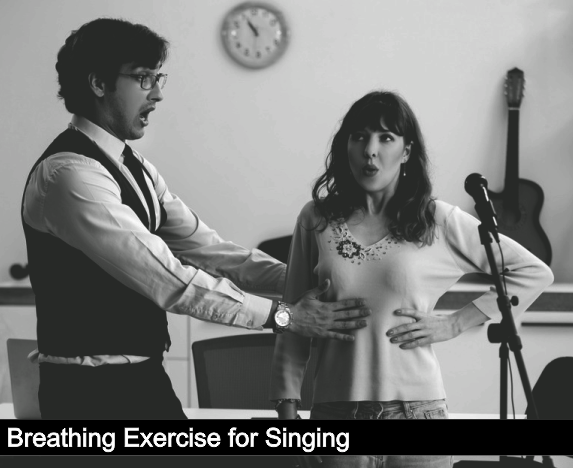Breathing exercise for singing is an essential thing to do. Because creating a good sound without being falls requires a lot of strength from air passing through the vocal folds. Of course, achieving proper breathing takes time to become used to, so we must be patient by doing so. It does require regular practice, and it is a skill that you need to develop. Therefore, here we will provide 4 breathing exercises for singing that you can apply and learn.
Learn How To Control Your Breath And Take The Correct Breath
Without us knowing it, most people breathe incorrectly every day. We take very shallow breaths from our chests which cause tension right where the vocal cords are, your neck, and all the areas that need to be relaxed while singing. What’s important about the breath is that it supports your voice. Even the pitch and tone are created by that particular breath. Pitch is created by those tiny airflows that pass through your vocal cords and allow your vocal cords to vibrate. This is also important because you don’t want to make the sound come out of your throat.
So many times, you will catch your breath when you start singing. The tension is in your throat, in your neck, and upper chest. So that you need to practice breathing exercises for singing. you have to pay attention to the way you breathe is that you can hold your hands like you’re going to eat a burger, wrap it around your back and ribs. You feel the front of your hand on your stomach. You should feel an expansion in your stomach, next to you, and almost as if your back is getting wider. So when you inhale, you shouldn’t see any upward movement, and the most important is that you will feel very relaxed.
Breath Management is Essential for Singing Exercise
It is the several muscles between your ribs called the intercostal muscles. So you retake your hand, wrap it around your ribs, take a breath like you were shocked, and passed out. Do it again, and collapse slowly; you can control the expansion. So you want to keep those muscles tight. In the video below, you can see furthermore Stephanie explains breathing management for singers as well as breathing exercises in detail.
Doing A Hissing Exercise
You should hold on to your breathing for 35 to 45 seconds. If you collapse too quickly, people often will let it go, especially at the beginning of their phrases; there’s too much air. So they’re going to unleash that minor collapse right at the start. So take a breath, control the expansion. You have to put up with that amount of air. If not, then practice that control. You have to exhale slowly and evenly the way you breathe. This method is also quite effective in helping you keep the sound stable. And even when you sing, To be in this breathing technique, you can regulate your breath, take a deep breath using your diaphragm, and then exhale while making a long “ssss” sound for 10 seconds.
See 10 Ways To Improve Your Voice For Beginner
A Good Strengthening Exercise For Your Diaphragm
When you sing, also make sure you breathe deeply using your diaphragm or abdominal muscles. That way, you don’t keep too much air in your throat, and it will make your voice tense and not good. Alright, so you want to take your hand, find your belly button, find the last rib in your stomach, put your hand there in the middle, and you’ll feel some kind of push out. Many people will say that you should feel your stomach muscles moving. You want to relax your abdominal muscles.


So what you want to do when you are doing breathing exercises for singing is actually activating your diaphragm to release your air. Holding the air in will cause tension, and you’ll be producing sound directly from your vocal cords – the same way if you weren’t taking a breath. So make sure they almost feel like you’re sighing. You should feel the downward thrust of the air in a relaxed, outward thrust. Also, you have to feel your diaphragm almost pushing out hard, then feel the engagement of your back in the muscles, your body, your stomach, everything moving, your whole body. But it’s the breath that pushes that diaphragm out, not your stomach muscles.












3 Comments